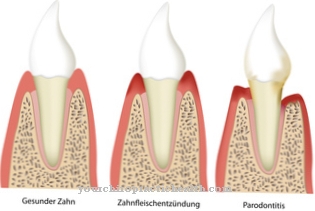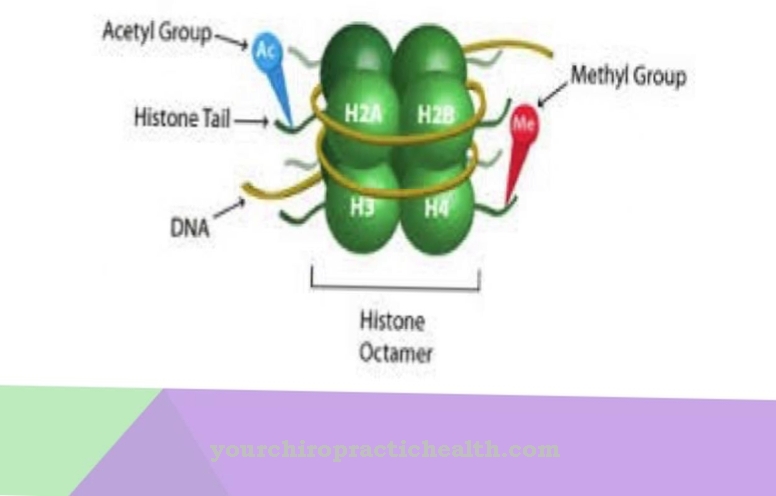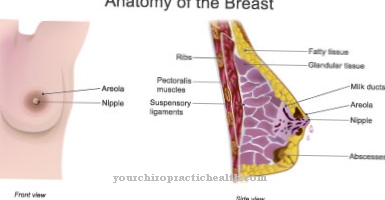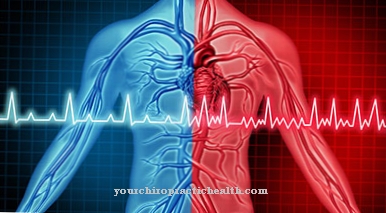The Keshan's disease is a rare disease of the heart muscle that is mainly attributed to a selenium deficiency. The disease was named after a city in northeast China's Manchuria. If there is a selenium deficiency, the body cannot synthesize the enzyme glutathione peroxidase to a sufficient extent, which is essential for neutralizing oxidative stress and which requires the selenium-containing amino acid L-selenocysteine to build up.
What is Keshan's Disease?

© tussik - stock.adobe.com
The Keshan's disease was named after a city in Manchuria, a northeastern province of China, and embodies a heart muscle disease, a cardiomyopathy. The special cardiomyopathy is essentially attributed to a deficiency in the trace element selenium.
The region is known for its selenium poverty and for a comparatively more frequent, almost endemic occurrence of Keshan's disease than in regions of the world whose soils contain enough selenium. Selenium is absorbed by plants and is then available throughout the food chain. Keshan's disease is due to a deficiency in the enzyme glutathione peroxidase, which requires the selenium-containing amino acid selenocysteine to build up.
It is not easy to distinguish Keshan's disease symptomatically from other cardiomyopathies. The course of the disease varies between acute, chronic and latent forms. Symptomatic complaints are heart failure, heart rhythm problems and, in the case of chronic disease, hypertrophication of the heart muscle with all the other problems that arise from it.
causes
The selenium deficiency, which is considered to be the main cause of Keshan's disease, is responsible for the fact that the body cannot synthesize the amino acid selenocysteine in sufficient quantities. Selenocysteine is very similar to cysteine. The only difference is that the sulfur atom of the cysteine is substituted by a selenium atom. Selenocysteine is a necessary component of the enzyme glutathione peroxidase (GPx) and other selenoproteins, the main task of which is to break down peroxides and oxidative stress.
The enzyme reduces hydrogen peroxide and at the same time oxidizes the tripeptide glutathione to glutathione disulfide. Selenium acts as a coenzyme in the reaction. Glutathione peroxidase is a necessary component of red blood cells (erythrocytes), for which hydrogen peroxide is highly toxic. Glutathione peroxidases thus have an important protective effect on the cardiovascular system against damage by peroxides.
A deficiency in the enzyme in the red blood cells can therefore trigger hemolytic anemia, a form of anemia caused by the premature and increased breakdown of red blood cells. The development of Keshan's disease can be explained by selenium deficiency via the causal cascade selenium deficiency, selenocysteine deficiency and the resulting deficiency in glutathione peroxidase.
However, the underlying mechanism for the occurrence of the disease is not (yet) fully understood. Experts are discussing the cause of Keshan's disease as well as selenium deficiency, the simultaneous involvement of a virus from the human coxsackievirus family.
Symptoms, ailments & signs
Keshan's disease manifests itself through various symptoms and complaints. In addition to cardiac arrhythmias, which can appear as the first symptoms, there is a gradual change in the myocardium. Muscle cells are replaced by cells similar to connective tissue, so that connective tissue penetrates the heart muscle.
This is also accompanied by hypertrophy of the heart muscle, typical signs of cardiomyopathy. In the further course of the disease, increasing heart failure can be observed, which is accompanied by a corresponding loss of performance. In rare cases, Keshan's disease can also cause immediately life-threatening cardiogenic shock.
Diagnosis & course of disease
The symptoms of Keshan's disease are usually quite unspecific, as hypertrophy of the myocardium, cardiac arrhythmias and heart failure of various degrees of severity can also be due to other causes, a careful diagnosis is indicated. In addition to the EKG, important diagnostic instruments are imaging procedures such as coronary angiography, echocardiography, computed tomography (CT), magnetic resonance imaging (MRT) and nuclear cardiological procedures.
The diagnostic methods are well suited to depicting the current situation. However, the findings do not yet provide any clear information about the causes that caused the pathological changes. The suspicion of Keshan's disease can only be confirmed if a laboratory analysis of the blood plasma confirms a selenium deficiency. The course of Keshan's disease ranges from mild to chronic to severe.
Complications
Keshan's disease causes various ailments or complications. However, this disease affects most people differently, so that as a rule no general course of the disease can be predicted. However, there are often complaints of the heart, so that in the worst case, the person affected can die of cardiac death.
Muscle wasting and muscle pain also occur. The resilience and the performance of the patient decrease enormously and a general feeling of illness occurs. The quality of life and everyday life of the person affected are considerably restricted by Keshan's disease. A so-called cardiogenic shock can also occur. If this is not treated, the person affected can die from it in the worst case.
The treatment is causal and symptomatic and in most cases leads to rapid improvement of the symptoms. There are no particular complications. However, the person concerned has to find out what causes the selenium deficiency. Furthermore, infusions or medication can be used to limit the symptoms of Keshan's disease. Treatment does not reduce the patient's life expectancy.
When should you go to the doctor?
Irregular heartbeat and disturbances of the heart rhythm should always be examined intensively by a doctor. If there is an interruption in the heartbeat, a racing heart, abnormalities in blood pressure, blood flow disorders or pain in the chest, a doctor must be consulted immediately. A decrease in the usual physical performance, an inner restlessness or an increased need for sleep indicate existing discrepancies in the organism, which should be clarified by a doctor.
In Keshan's disease, symptoms develop slowly and gradually over a long period of time. With this steadily progressive course of the disease, it is often difficult to objectively assess the health development. It is therefore advisable to take part in regular check-ups and stress tests. In addition, a doctor should be consulted as soon as the person concerned has been suffering from general weakness, fatigue or insomnia for a long period of time. If you feel a lack of oxygen, if you experience general functional disorders or changes in breathing, a doctor's visit is required.
Irritability, behavioral abnormalities, dissatisfaction, or mood swings can all indicate existing health problems. If the symptoms increase or if they continue to spread, a doctor should be consulted. If symptoms of fatigue quickly occur, normal professional requirements can no longer be met and if a decrease in cognitive performance is noticed, a doctor must be consulted.
Treatment & Therapy
If a selenium deficiency is confirmed by laboratory tests, one of the most important measures is to remedy the selenium deficiency. However, it should be clarified beforehand what causes the selenium deficiency and thus Keshan's disease mainly caused.
If there is no selenium deficiency due to a one-sided diet with a proven low selenium content, the absorption capacity for the trace element may be reduced due to inflammatory diseases in the digestive tract or due to diarrheal diseases, so that a temporarily higher selenium intake should be considered. With a sufficient selenium concentration in the blood plasma, which should be over 80 µg / l.
With a sufficient concentration of selenium in the blood plasma and blood serum, the causes of Keshan's disease are combated. If the myocardium is already irreversibly damaged, further therapeutic measures that serve the direct treatment of certain symptoms can also be considered.
After reaching a concentration of around 80 to 160 µg / l in the blood plasma, the selenium dose can be reduced to avoid selenium poisoning (selenosis). The daily intake of selenium as a maintenance requirement is between 30 and 70 micrograms for a healthy adult.
Outlook & forecast
With an early diagnosis and medical treatment, a full recovery of the patient is possible. The lack of selenium is gradually compensated for by the administration of special medication. This will alleviate the symptoms that have arisen and, in the course of the coming weeks or months, will be free of symptoms. The levels of selenium in the organism are regularly monitored so that an optimal supply can take place. In addition, the cause of the deficiency is analyzed. If the causes of Keshan's disease can be clarified and permanently eliminated, a lasting cure is possible.
If left untreated, the selenium deficiency can lead to a premature death of the person affected in the event of severe disease. An acute and long-lasting selenium deficiency threatens the affected person with cardiac death. There is also the risk of death if the disease is already well advanced or there are additional diseases of the heart.
Due to the severe course of the disease, early treatment is particularly important. If the disease breaks out again in the course of life, you should also react as quickly as possible and seek medical care. In some cases, the affected person's organism is already so weakened that the symptoms are stronger if the disease breaks out again and complications and impairments occur earlier.
prevention
Preventive measures to avoid Keshan's disease in the form of adding selenium to the daily diet are only advisable in regions with extreme selenium poverty in the arable and garden soils. The food produced there also has a very low selenium content, as does the meat of the animals that feed on the plants.
The selenium deficiency runs through the entire food chain in the regions concerned. If the absorption capacity of trace elements in the intestine is reduced over a longer period of time, it may also be necessary to supply additional selenium in addition to normal food if the selenium concentration in the blood has dropped below about 80 µg / l.
Aftercare
As a rule, follow-up care measures for Keshan's disease are very limited. First and foremost, a quick and, above all, early diagnosis of the disease is very important so that no further complications or other complaints occur. Keshan's disease cannot heal on its own either, so that the person affected should consult a doctor at the first symptoms and signs of the disease.
The disease itself can be alleviated relatively well in most cases by taking various medications. However, the person affected should always ensure that they take the medication regularly and that the dosage is correct, as Keshan's disease cannot heal itself.
Regular checks and examinations by a doctor are also necessary in order to correctly determine the concentration in the blood. In children, it is especially the parents who need to pay attention to the symptoms of the disease and, if necessary, consult a doctor. In many cases, a proper diet can also relieve the symptoms of Keshan's disease permanently and, above all, properly, although the disease rarely reduces the life expectancy of the person affected.
You can do that yourself
Depending on the cause, Keshan's disease can be treated by those affected. If the disease is caused by a selenium deficiency, a change in diet is sufficient. A balanced and healthy diet supplies the body with the necessary trace elements and thereby also reduces symptoms. Fruit and vegetables are particularly recommended, especially light foods and foods that do not put too much strain on the heart, as well as lean meat and plenty of fluids. Luxury foods such as alcohol, coffee or cigarettes should be avoided.
If irreversible damage has already occurred, further therapeutic measures are indicated, for example targeted cardiac muscle training or wearing a pacemaker. In the event of serious complications such as cardiogenic shock, the emergency doctor must be called immediately. First aid must be provided and resuscitation measures may also be indicated.
With such a severe course, a longer hospital stay is definitely necessary. The person affected can best support the healing process by refraining from physical exertion and following the prescribed diet. Advanced Keshan's disease must also be checked regularly so that any complications can be identified and treated at an early stage.

.jpg)

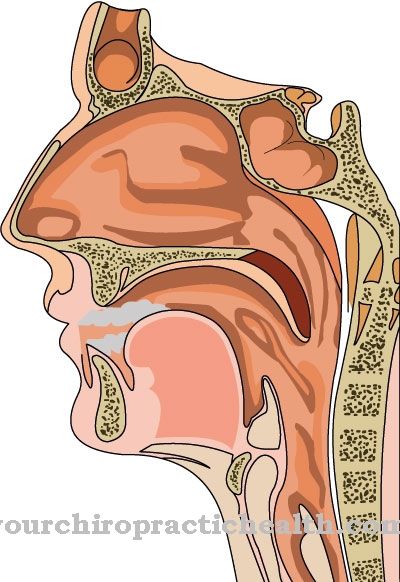

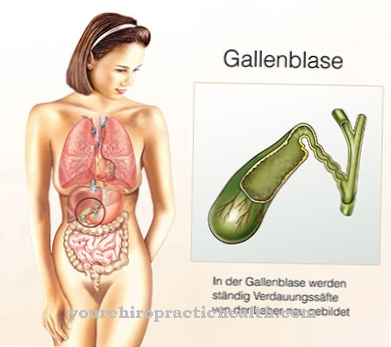
.jpg)

.jpg)


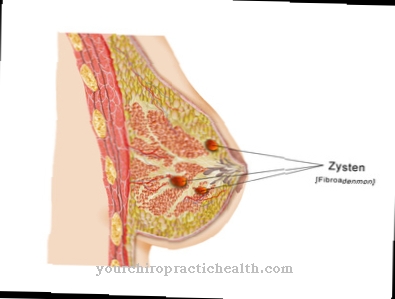

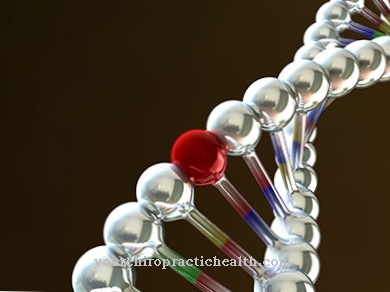

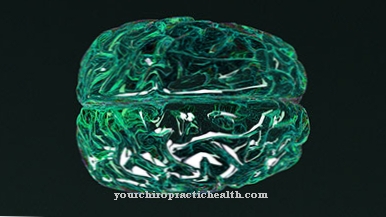
.jpg)



.jpg)
